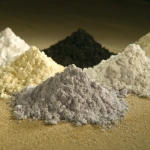MALAYSIA: Dirty Dam Draws Dirty Smelters
Transnational aluminium smelters, some teaming up with Malaysian partners, are beating a path to eastern Sarawak state with an eye to surplus power from the problem-ridden Bakun Dam.
The much-delayed dam in Sarawak, on Borneo island, was originally scheduled for completion in 2003, but is now only expected to gradually generate electricity from late 2009.
Faced with soaring electricity tariffs and raw material costs, many aluminium plants have closed shop in the United States and Europe. Major smelters are now scouring the globe for places where electricity is cheap and their sights have narrowed down on Bakun's excess potential even as environmentalists worry about the impact that the dam, and now the smelters, would have on the environment.
In particular, smelters from China, the world's largest aluminium user, have been showing a keen interest in Bakun. Last year, over 40 smelters stopped production in China due to higher costs and government moves to curb pollution -- resulting in a loss of more than half a million tons of aluminium.
The 2,400 megawatt Bakun hydroelectric dam project was approved by the administration of former premier Mahathir Mohamad in 1994, amidst an outcry that the dam would submerge rainforests covering an area the size of Singapore and displace thousands of indigenous people.
Planners ambitiously aimed to channel 70 percent of the dam's generated power across the South China Sea to Peninsular Malaysia by laying over 600 km of submarine cables. It would have been the longest undersea transmission line in the world and an expensive proposition.
Local firm Ekran was awarded the contract to manage the project while the construction contract went to the Zurich-based multinational Asea Brown Boveri (ABB). But by 1997, with the onset of the Asian financial crisis and amidst disputes over cost over-runs, the government announced that it was delaying the project and paid compensation to the firms involved.
In 1999, it was announced that the dam would be scaled down. The submarine cable idea, its technical feasibility always in major doubt, was scrapped but work on the river diversion tunnels began and have now been completed.
In 2001, the government, perhaps mindful of the work already done since 1996, decided to stick to the original 2,400 MW capacity. But without the undersea cables, the economic justification for the dam -- to channel electricity to the more industrialised peninsula -- evaporated.
''It's utterly unnecessary,'' said one Sarawak-based political analyst of the dam, declining to be identified for fear of repercussions. ''The only people who need the dam are the Sarawak politicians and their cronies.''
Moreover, he added, Sarawak has a wealth of alternative energy resources such as natural gas. According to the Bintulu Development Authority, the state has a total known gas reserve of about 50 trillion standard cubic feet.
On Bakun, the government faced a stark choice: cut its losses -- some two billion ringgit (0.5 billion US dollars) already spent and prevent any further environmental damage or pour more money -- a further 5-6 billion ringgit (1.3-1.6 billion dollars) -- into an ever-deeper hole. It decided to press on.
The government, through an outfit called Sarawak Hidro, took over the management of the project. A Malaysia-China Hydro Joint Venture consortium, led by a Malaysian firm, Sime Darby Berhad, is now constructing the dam. Already, there are reports of cost overruns and delays.
But what to do with all that surplus electricity from the dam? After all, Sarawak state itself and neighbouring Sabah have comfortable reserve margins. Electricity demand in Sarawak remains modest (currently under 1,000 MW).
Plans to distribute Bakun's power to the rest of Borneo island, which is politically divided among Malaysia, Brunei and Indonesia, never took off.
Enter the giant multinationals, teaming up with local firms, seeking approval to build a smelter in Sarawak. The production of aluminium requires a huge amount of electricity, accounting for close to 40 per cent of production costs, which explains why many smelters are built near major sources of electricity supply.
One visitor to a popular local current affairs blog summed it up: ''Bakun Dam is the solution to Sarawak's power shortage. But they forgot Sarawak has no power shortage. That's no problem to the dam's promoters: just create a shortage by building an aluminium plant. That way, they succeeded in finding a problem for the solution.''
Even the business weekly, 'The Edge' seemed to agree: ''In Sarawak, the main reason the federal government is allowing an aluminium smelter is to salvage Bakun,'' it said in a candid report. Among those The Edge reported as bidding for approval to build a smelter is local firm Smelter Asia, teaming up with China Aluminium International Engineering, which reportedly wants to set up a 500,000 tonne capacity plant that would consume about half of Bakun's output.
Another Malaysia-China consortium is seeking approval for a 3.2 billion dollar smelter. The local firms in this consortium are Cahya Mata Sarawak (CMS) and Press Metal.
Giant multinationals reportedly also in the running are Australia-based Rio Tinto Group, BHP Billiton teaming up with Mitsubishi Corp, and the Alcoa Group.
Smelter Asia is owned by tycoon Syed Mokhtar Al-Bukhary, who has warm ties with former premier Mahathir Mohamad. CMS, on the other hand, is a well-connected group with diversified interests in Sarawak led by Sulaiman Abdul Taib, the son of the powerful Sarawak chief minister Taib Mahmud.
Critics point out that its unit, CMS Cement, which is capable of producing some 2 million tonnes a year, has a near monopoly on cement in Sarawak while another unit, CMS Steel, produces 300,000 tonnes of steel bars and wire rods.
In 2004, the group announced that CMS Energy had been awarded a 51 per cent stake in a contract worth RM 130 million (30 million dollars) for the 'Design and Execution of the Hydraulic Steel Structure Package' of the dam. The group is thus well placed to benefit from the dam's construction work, which requires huge amounts of cement and steel.
Apart from the questionable justification for Bakun, environmentalists are worried about the polluting effects of smelters. Smelters emit perfluorocarbon (PFC), which is detrimental to humans, animals and vegetation and has global warming potential.
''Communities in the adjacent areas would be affected by its polluting emissions, once it is built,'' said Wong Meng Chuo, a college lecturer and social activist who spent many years working among communities in Sarawak. ''It is also of concern that the industry would bring changes to the social structure as well as to the cultural practices of the community.''
From experience, he said, such changes are always more of a negative nature since the community is often ill prepared for them. The smelter's impact on the natural environment ''could be devastating, especially in a developing country like ours where law and enforcement is lax''.
''I think it's a dirty industry,'' agreed the political analyst who did not want to be identified. ''We don't need it in Sarawak at a time when the environment has already been terribly degraded through logging and the rivers polluted through siltation and sedimentation.''
- 107 Energy



